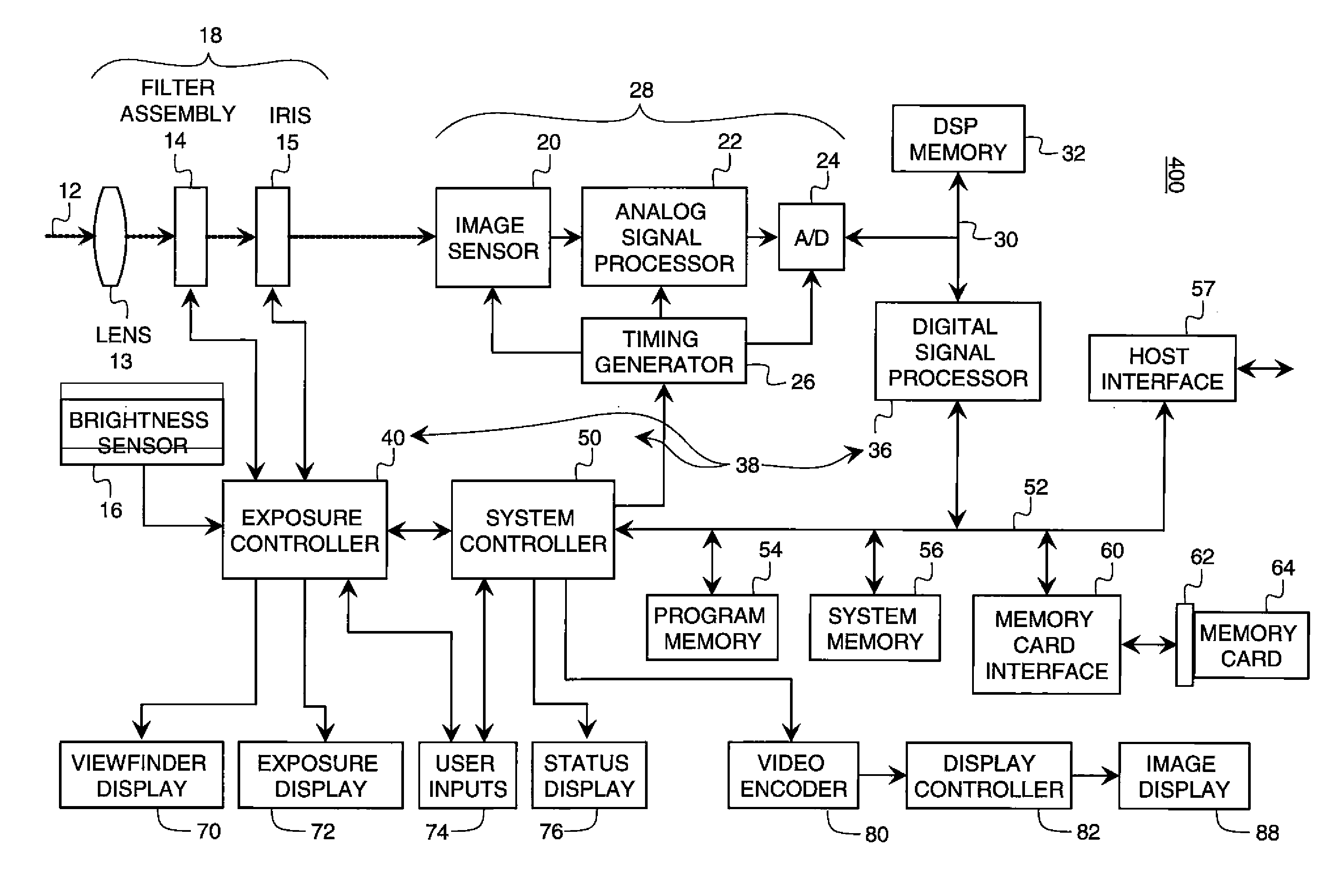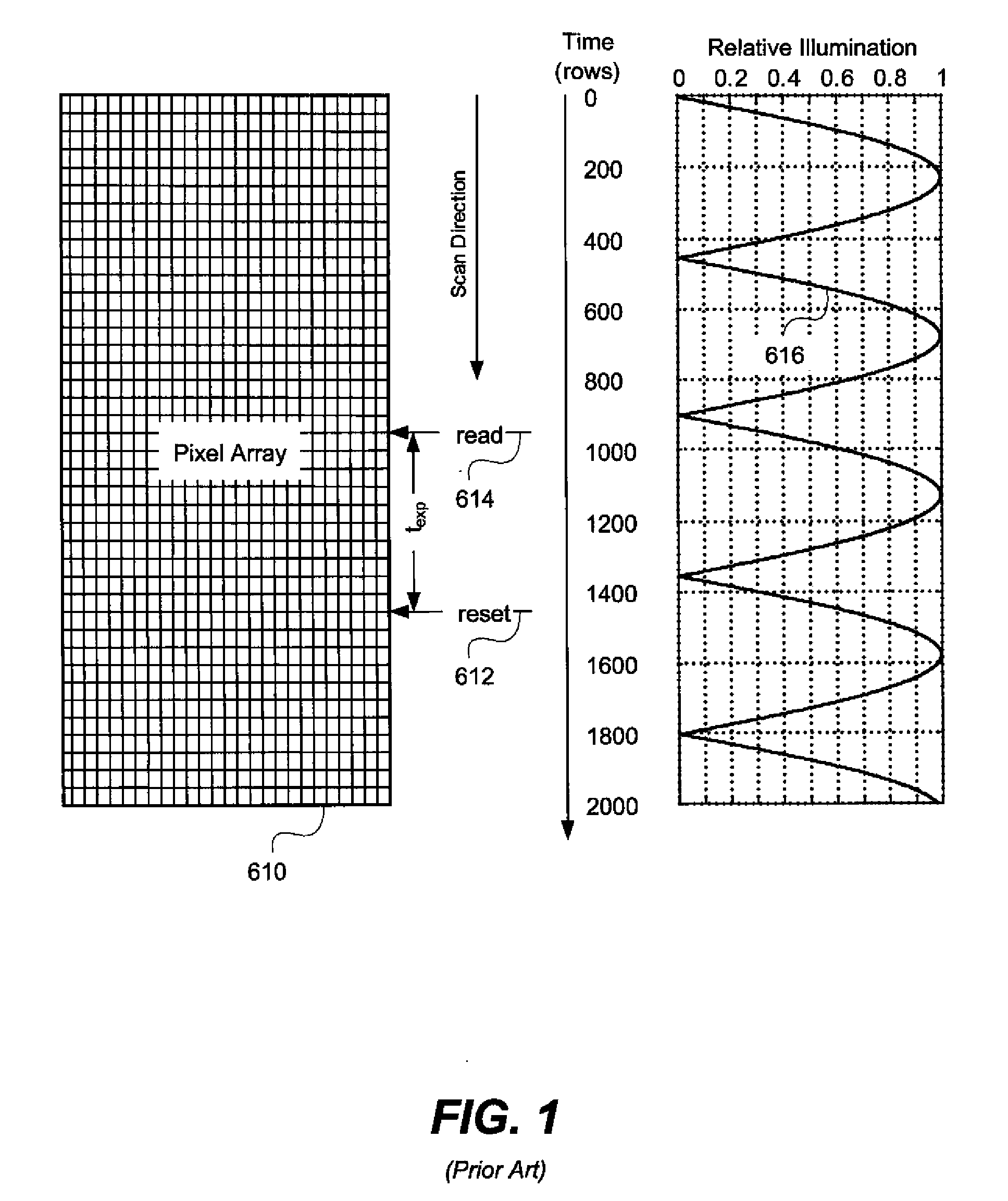Detecting illuminant flicker
a technology of illuminant and flicker, which is applied in the field of image processing using a digital sensor array, can solve the problems of poor indication, computational cost of task of acquiring frame difference data, and conventional approaches such as those just cited, and achieves improved identification ability, high dynamic range, and efficient use of processing resources.
- Summary
- Abstract
- Description
- Claims
- Application Information
AI Technical Summary
Benefits of technology
Problems solved by technology
Method used
Image
Examples
example 1
Processing and Computation Example 1
[0090]A first example given in the graphs of FIGS. 8A through 8F shows the operation of processing step 110 and computation step 140 in the logic flow of FIG. 4. Referring back to the logic flow diagrams of FIG. 4, processing step 110 provides a current column vector (CCV). Step 110 begins by obtaining a column vector, and then performs some amount of additional processing that generates a modified column vector that serves as the current column vector CCV.
[0091]For the logic flow shown in FIG. 4, two frames are used, labeled Frames 1 and 2 in the example of FIGS. 8A through 8F. The first part of the following description, focusing on processing step 110, obtains and processes Frames 1 and 2 to generate their corresponding modified column vectors. The processing in computation step 140 uses the two modified column vectors to generate a refined difference vector used for subsequent autocorrelation.
[0092]Step 110 processes the original column vector...
PUM
 Login to View More
Login to View More Abstract
Description
Claims
Application Information
 Login to View More
Login to View More - R&D
- Intellectual Property
- Life Sciences
- Materials
- Tech Scout
- Unparalleled Data Quality
- Higher Quality Content
- 60% Fewer Hallucinations
Browse by: Latest US Patents, China's latest patents, Technical Efficacy Thesaurus, Application Domain, Technology Topic, Popular Technical Reports.
© 2025 PatSnap. All rights reserved.Legal|Privacy policy|Modern Slavery Act Transparency Statement|Sitemap|About US| Contact US: help@patsnap.com



